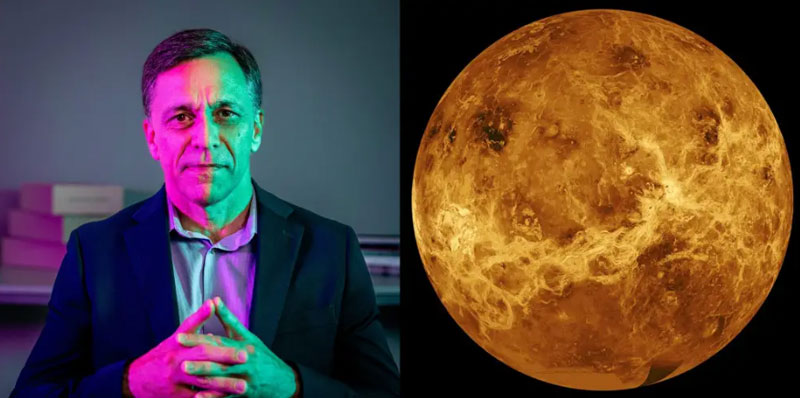In the vast expanse of our solar system, Venus has long been considered a hostile and inhospitable planet. With its thick atmosphere composed mainly of carbon dioxide and extreme surface temperatures, it might seem like the last place anyone would consider for human habitation. However, daring entrepreneurs have often shown that they are not bound by conventional thinking, and one such visionary is the co-founder of OceanGate, Guillermo Söhnlein. His audacious proposal to establish a human colony on Venus has raised eyebrows, but it also sparks curiosity and excitement about the possibility of conquering new frontiers.

Venus presents an array of challenges that must be surmounted for any human settlement to succeed. Its average surface temperature hovers around a scorching 470 degrees Celsius (880 degrees Fahrenheit), higher than the surface temperature of Mercury, even though Venus is not the closest planet to the Sun. The atmospheric pressure on Venus is approximately 92 times greater than that of Earth, equivalent to the pressure experienced one kilometer underwater in Earth’s oceans.
Beyond the extreme heat and pressure, the Venusian atmosphere is primarily composed of thick clouds of sulfuric acid, rendering any traditional form of life support or infrastructure almost useless. Additionally, the planet experiences hurricane-force winds that can exceed 360 kilometers per hour (220 miles per hour) in the upper atmosphere.
Despite these daunting challenges, Guillermo Söhnlein remains undeterred, citing several reasons that make Venus an enticing prospect for human colonization. First and foremost, Venus is our neighboring planet, relatively close to Earth compared to other celestial bodies. This proximity means that it is accessible with current space travel technology, making it a more viable option than destinations farther away in the solar system.
Furthermore, the upper atmosphere of Venus, approximately 50 kilometers above its surface, offers surprisingly mild temperatures and pressure conditions similar to those found on Earth. This region, known as the “Venusian cloud city,” has been proposed as a potential location for the colony. In this area, breathable air, though scarce, is available. By staying aloft in this zone using airships or aerostats, the colony could potentially find a way to thrive amidst the harsh surroundings.
The journey to establish a colony on Venus would undoubtedly require revolutionary technology and unprecedented innovation. From advanced life support systems to efficient energy generation methods, every aspect of the colony’s infrastructure would demand inventive solutions.
Prominent scientific organizations and space agencies have also shown interest in exploring the possibility of human habitats on Venus. NASA, for instance, has discussed the High Altitude Venus Operational Concept (HAVOC), which envisions crewed missions and semi-permanent habitation in the Venusian atmosphere.
However, challenges like Venus’s lack of a magnetic field to protect against harmful solar radiation, difficulties in resource extraction, and prolonged space missions to transport settlers to the planet pose significant obstacles to overcome.
Critics argue that efforts to colonize other planets should be focused on more viable options like Mars, where conditions are less extreme and resource utilization might be more feasible. Some even raise ethical concerns about whether humans have the right to intrude on another planet, potentially altering its natural state irreversibly.
While these concerns merit careful consideration, Guillermo Söhnlein believes that humanity’s survival may rely on becoming a multi-planetary species. Developing the technology and expertise to thrive on planets like Venus could prove invaluable in the long run, especially if unforeseen challenges arise that make life on Earth less tenable.
The idea of a human colony on Venus remains a bold and audacious vision, yet it reflects the indomitable spirit of exploration and human ingenuity. Guillermo Söhnlein’s proposal challenges us to think beyond the conventional limits and raises questions about humanity’s future among the stars.
As we contemplate the possibility of setting foot on another world, it is essential to balance our innate curiosity with a sense of responsibility. Whether the colonization of Venus becomes a reality or remains a distant dream, the discussions and innovations it inspires will undoubtedly contribute to the progress of human space exploration, enriching our understanding of the cosmos and ourselves.
